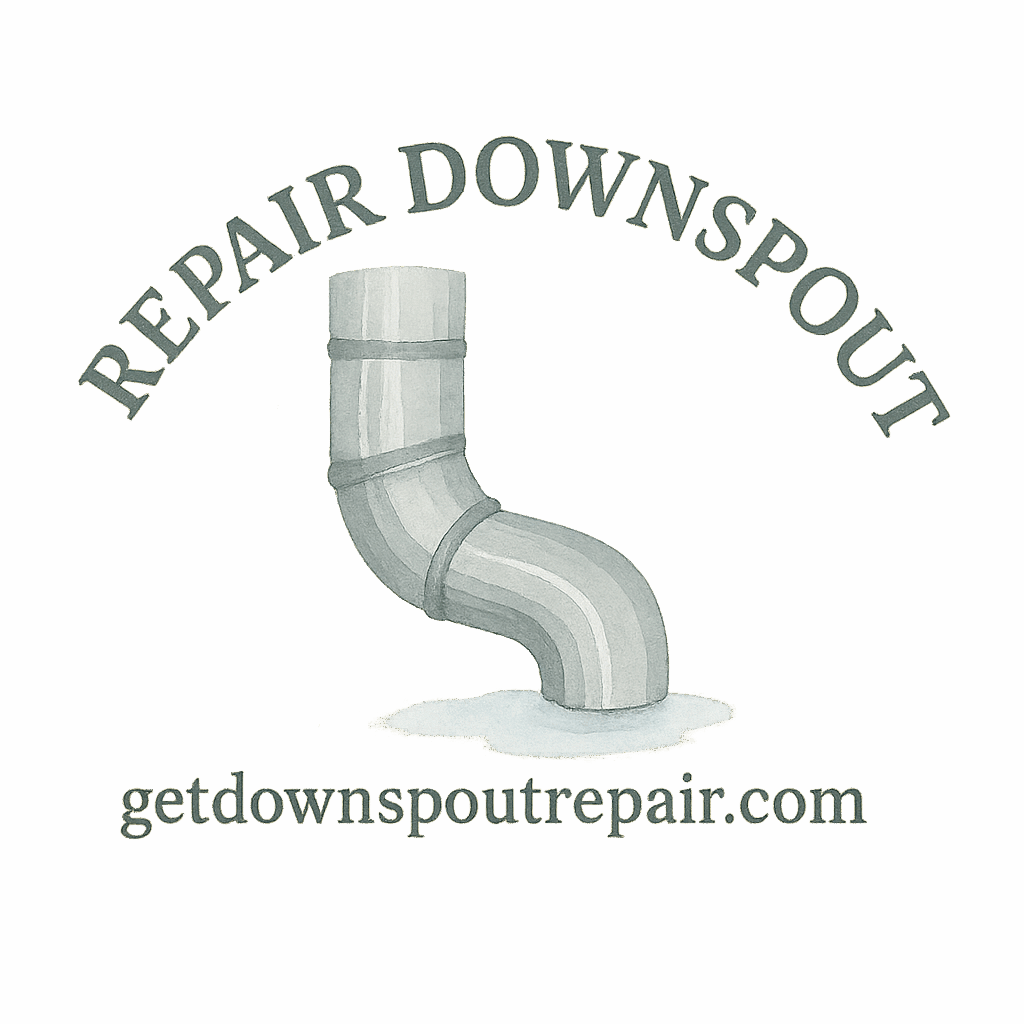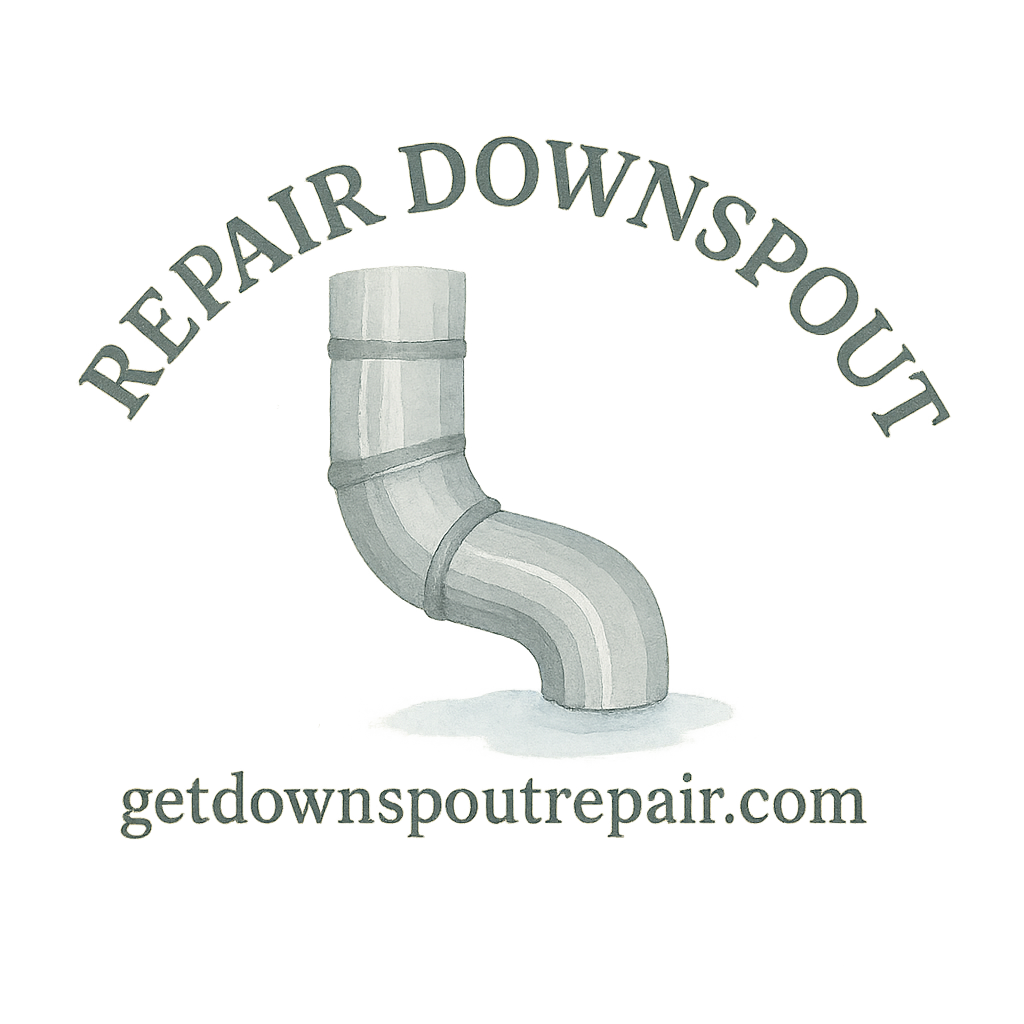Introduction to DIY Downspout Repair
If your downspout has started leaking, cracking, or letting water pool around your foundation, you don’t always need to replace the entire system. Sometimes, the fix is as simple as grabbing the right sealant and patching things up yourself. DIY downspout repair is becoming more popular because it saves money, prevents water damage, and gives homeowners peace of mind.
Sealants are like the glue that keeps your gutter and downspout system working smoothly. Without them, even the strongest materials eventually fail. But with the right one? You can easily extend the life of your downspouts and avoid costly repairs.
Why Sealants Are Essential for Downspout Repair
Preventing Leaks and Water Damage
Downspouts are designed to carry rainwater away from your home. But if cracks or gaps form, that water could seep right into your walls or foundation. Sealants create a waterproof barrier, making sure no leaks sneak through.
Extending Downspout Lifespan
Think of a sealant as a protective shield. By sealing vulnerable spots, you stop rust, corrosion, and weather damage from spreading. That means your downspouts last longer and need fewer replacements.
Saving Money with Quick Fixes
Instead of paying hundreds of dollars for replacements, a $10–$20 tube of sealant can do the job. DIY repairs with the right sealant are not just affordable, they’re smart.
Choosing the Right Sealant for Downspout Repair
What to Look for in a Sealant
Not all sealants are created equal. For downspout repair, look for:
- Weather resistance (must handle rain, heat, and freezing temps).
- Flexibility (to expand and contract with temperature changes).
- Adhesion (sticks to metal, vinyl, or aluminum surfaces).
- Longevity (lasting at least a few years before reapplying).
Mistakes to Avoid When Selecting Sealants
- Don’t pick indoor-only caulks—they’ll fail outdoors.
- Avoid cheap, generic sealants that crack within months.
- Don’t use a product without checking compatibility with your downspout material.
For more on basic repair mistakes, check out this beginner repair guide.
The Top 6 Sealants for DIY Downspout Repair Projects
1. Silicone Sealant for Flexible Sealing
Silicone sealants are the most popular choice for downspout repair, and for good reason. They’re waterproof, flexible, and can withstand extreme weather.
Best Uses of Silicone Sealant
- Fixing small cracks and leaks.
- Sealing joints and seams.
- Use on vinyl and aluminum downspouts.
Pros and Cons of Silicone Sealant
- ✅ Stays flexible for years.
- ✅ UV resistant.
- ❌ Harder to paint over.
- ❌ Requires proper surface prep for best adhesion.
2. Polyurethane Sealant for Heavy-Duty Repairs
Polyurethane is a beast when it comes to strength. It bonds tightly to most surfaces and is excellent for bigger cracks or leaks.
Why Polyurethane Is Great for Metal Downspouts
This sealant works wonders on aluminum and steel downspouts where rust or large splits are common.
Application Tips for Polyurethane
- Apply in thin, controlled beads.
- Allow longer curing time compared to silicone.
3. Acrylic Sealant for Budget-Friendly Repairs
If you’re repairing on a budget, acrylic sealants are a solid option. They’re inexpensive and easy to apply, though not as durable as polyurethane or silicone.
When to Use Acrylic Sealant
- Great for temporary fixes.
- Works best on hairline cracks.
Limitations of Acrylic Sealant
- ❌ Less flexible in extreme weather.
- ❌ Not as long-lasting outdoors.
For more budget-friendly repair tips, visit downspout budget tips.

4. Butyl Rubber Sealant for Long-Lasting Repairs
If you want a strong, waterproof, and flexible sealant, butyl rubber is an excellent choice.
Strengths of Butyl Rubber Sealant
- Extremely durable.
- Excellent adhesion to metal and plastic.
Durability and Performance
This sealant is ideal for long-term fixes in areas that face heavy rain or constant exposure to moisture.
5. Hybrid Sealants (MS Polymer) for All-in-One Repairs
Hybrid sealants combine the best of silicone and polyurethane, giving you strong adhesion and excellent flexibility.
Why Hybrid Sealants Are Popular
- Paintable.
- Works in wet or dry conditions.
Best Applications for Hybrid Sealants
- Sealing seams and joints.
- Multi-material repairs.
6. Asphalt-Based Sealant for Outdoor Durability
When you’re dealing with metal downspouts and want serious weather protection, asphalt-based sealants are a go-to option.
Ideal Conditions for Asphalt-Based Sealants
- Best for metal and roofing-related repairs.
- Excellent for sealing large cracks.
Things to Keep in Mind with Asphalt Sealant
- ❌ Limited flexibility.
- ❌ Messier to apply compared to silicone or hybrid sealants.
How to Apply Sealant to a Downspout Step by Step
Preparing the Downspout Surface
- Clean the surface thoroughly.
- Remove rust, dirt, and old caulking.
Applying Sealant Properly
- Use a caulking gun for precision.
- Apply steady pressure and smooth out with a tool or your finger.
Drying and Curing Tips
- Allow sealant to fully cure before water exposure.
- Check product instructions for drying times.
For more DIY tips, see DIY downspout fixes.
Common Downspout Problems Sealants Can Solve
Small Cracks and Leaks
Sealants easily patch tiny cracks before they grow.
Rusted Joints
Sealants help stop leaks around rusted areas and slow down corrosion.
Loose Connections
Sealants reinforce joints and prevent separation.
Learn more about these problems at downspout problems guide.
DIY vs Professional Downspout Repair
When DIY Is Enough
If the issue is minor—like a crack or small leak—DIY sealant repair is usually sufficient.
When to Call a Professional
If your downspouts are collapsing, or water damage is already visible, it’s safer to call a licensed contractor.
Safety Tips for DIY Downspout Repair
- Always wear gloves when handling sharp metal edges.
- Work on a stable ladder and never rush.
- Use eye protection when scraping or cleaning.
Budget Tips: Getting the Most from Sealants
- Buy multipurpose sealants in bulk.
- Use leftover sealant for gutters or other outdoor projects.
- Store tubes properly to prevent them from drying out.
More tips are available on budget-saving downspout repairs.
Long-Term Maintenance for Sealed Downspouts
- Inspect sealed areas annually.
- Reapply sealant if you notice cracks or wear.
- Clean gutters regularly to prevent clogging.
Explore prevent clogging tips to keep downspouts flowing smoothly.
Conclusion
Sealants are the secret weapon for keeping your downspouts working like new. Whether you pick silicone, polyurethane, acrylic, butyl rubber, hybrid, or asphalt-based, the right choice depends on your downspout’s condition and your repair needs. With the right prep, application, and maintenance, you can extend your system’s life, save money, and avoid water damage.
If you want more repair insights, don’t forget to check out repair basics and expert advice.
FAQs
1. What’s the best sealant for aluminum downspouts?
Silicone or polyurethane sealants are the best for aluminum since they’re flexible and durable.
2. Can I use indoor caulk for outdoor downspout repairs?
No—indoor caulk won’t withstand rain, UV rays, or temperature changes.
3. How long does a sealant repair last?
With proper application, good sealants can last 3–10 years depending on the type.
4. Do I need to remove old sealant before applying new?
Yes, always scrape off old or cracked sealant for the best adhesion.
5. Can sealants fix large holes in downspouts?
Sealants work for small to medium cracks. Large holes may require patching or replacement.
6. Is it safe to paint over sealant?
It depends. Acrylic and hybrid sealants are paintable, but silicone usually isn’t.
7. Should I hire a pro for major leaks?
Yes. For major leaks or structural issues, a downspout expert is the better choice.


